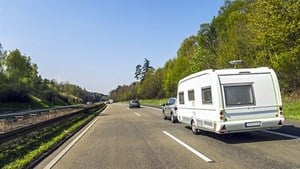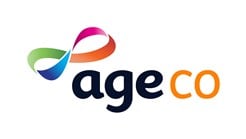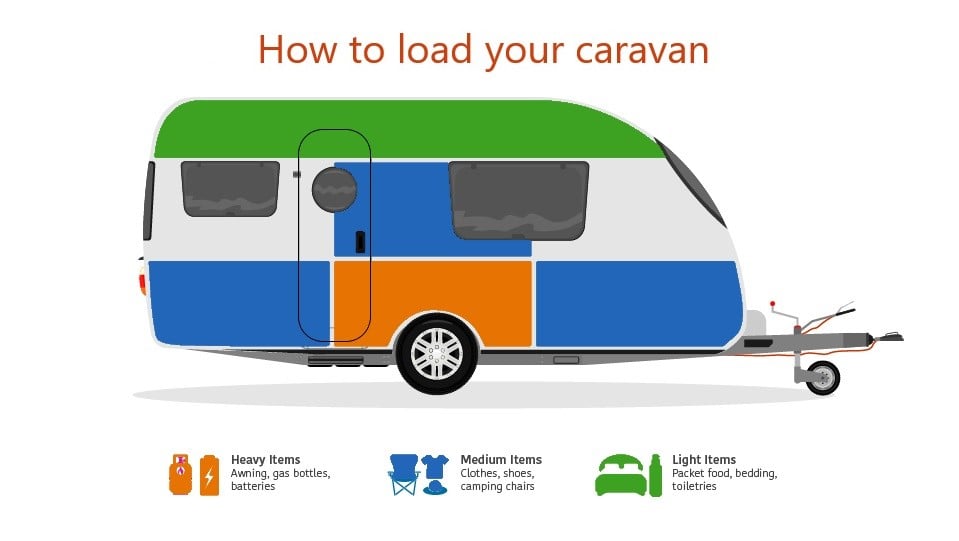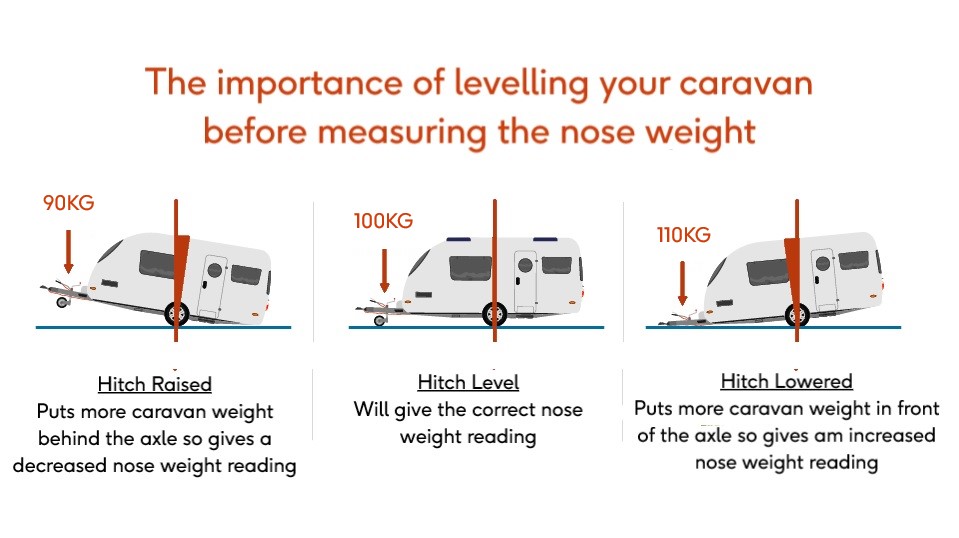How to tow a caravan
11 minute read

Exploring with a caravan offers you the freedom to travel anywhere, at any time, and you can even take your home comforts right along with you.

Age Co Travel Insurance
Age Co Travel Insurance offers annual and single-trip policies that cover 99% of pre-existing conditions, with no upper age limit.
However, as seasoned caravaners will know, there’s a lot more to towing a caravan than you may think. If you’re considering investing in a caravan to enjoy some more time on the open road or want to pick up a few pointers for your next trip away, our guide on how to tow a caravan has everything you need to know - from packing and preparing to towing a caravan or trailer safely and legally.
What licence do I need to tow a caravan?
Depending on when you passed your driving test and the size of your caravan or trailer, you may already have the correct licence:
*The MAM includes the weight of passengers and luggage in the car, as well as the weight of your fully-loaded caravan or trailer. This is also known as gross vehicle weight (GVW) or permissible maximum weight.
Towing a caravan if you’re over the age of 70
Once you reach the age of 70, your driving licence will expire and you will need to renew your licence every three years if you want to continue driving. However, if you already hold the B+E licence category prior to your licence expiry, you will retain the entitlement when your licence is renewed.
Find out more about driving after 70, including how to renew to your licence and health conditions which you will need to declare to the DVLA.
What weight can I tow?
It’s important to find out whether your car is up to the task of towing. If the caravan or trailer is over a certain weight – relative to the weight of the towing car – it won’t be safe, or legal, to tow.
To calculate your car’s towing capacity, you’ll need to know the car’s kerb weight, which is the total weight of the car minus passengers, fuel and any cargo. You'll also need to the the caravan or trailer’s Maximum Technically Possible Laden Mass (MTPLM), which will be the maximum weight it can be loaded to before it becomes unsafe to tow. Both measurements can be found in the car and caravan’s registration documents.
It’s recommended that the MTPLM should not be more than 85% of the kerb weight, otherwise it will be difficult to tow. Only drivers that are experienced in towing should attempt to tow caravans or trailers with an MTPLM of between 85% and 100% of the kerb weight of the car, as heavier caravans and trailers are much harder to control on the roads. If the towing caravan or trailer is heavier than the car, then it shouldn’t be used as a towing vehicle.
How to load your caravan
When packing your caravan for your upcoming trip, it’s important to load it carefully. To ensure your caravan is as stable as possible, you’ll need to ensure the weight is centred around the axel, with the heaviest items placed lower down in the centre of the caravan and lighter items towards the front and back.

The importance of packing your caravan correctly
Snaking and pitching
Packing your caravan correctly will provide you with better control of your vehicle while out on the roads. In fact, if your towing car and caravan are not well-matched in terms of weight, or are not loaded properly, you may experience snaking or pitching: terms used to describe the movements caused by the imbalanced weight of the caravan and the car.
When the swaying of the caravan becomes too excessive, and the weight of the caravan begins to drag the tow car, this is known as ‘snaking’, while ‘pitching’, is when the front of the caravan moves up and down and causes the rear of the tow car to pull around like a seesaw.
While air turbulence from an HGV can sometimes cause the caravan to drag the tow car, the best way to avoid snaking and pitching is to pack your caravan correctly and ensure the weight is properly balanced.
Here are a few handy tips to remember:
- If your caravan begins snaking or pitching, steer straight and lift your foot off the accelerator. Avoid breaking, as this can cause the problem to worsen.
- If a queue of traffic builds up behind you, try and pull over in a safe place and let it pass.
How to work out the weight allowance of your caravan
There are car weight allowances for both cars and caravans, and calculating how much your vehicles can carry will determine how much luggage you can load into your caravan and towing car before they become unroadworthy.
MAM* is the maximum amount of weight a car can carry without damaging the car’s suspension or compromising the effectiveness of the brakes or handing. You can find the MAM for your car in your V5C registration document along with your car’s kerb weight.
You can calculate how much luggage you can load into your tow car using the following:
Maximum Authorised Mass (MAM) - kerb weight = car weight allowance
The Maximum Technically Possible Laden Mass (MTPLM) is the maximum weight your caravan be loaded to, this will be provided by your caravan manufacturer.
The best way to find out how much weight you can load in your caravan is by weighing your caravan at a public weighbridge. You can then calculate the maximum amount you can load in your caravan using the following:
Maximum Technically Possible Laden Mass (MTPLM) – caravan’s weighbridge weight = caravan weight allowance
Quick tips for reducing your caravan's weight
If you're finding that your caravan is a little on the heavy side, here are some top tips for keeping the weight down:
- Water is extremely heavy, so always fill up when you reach the campsite.
- Go for lightweight gas bottles rather than the traditional type.
- Try revamping the interior and remove the carpets, curtains or any excess shelving you don’t use.
- If there are only a couple of you travelling, try cutting back on pots, pans, cutlery and crockery.
- Be sparing with items such as towels, and only pack heavy clothing if it’s needed.
How to measure your caravan’s nose weight
To ensure your caravan is stable and safe to tow, it’s important to know how to calculate your caravan’s nose weight. You will also need to know how to adjust the nose weight if you need to.
The nose weight is the force exerted on your car’s tow ball, and if the nose weight is too much, it can weigh down the car’s rear suspension. Putting too much pressure on the towing car’s rear tyres will mean there is not enough grip on the front tyres, and it could cause the car’s headlights to become angled upwards and above the legal height.
On the other hand, if the downwards weight is too little, there won’t be enough grip on the car’s tyres and the weight of the caravan could even elevate the rear of the car when travelling uphill.

Your caravan’s nose weight should be approximately 7% of its laden weight (the net weight of your caravan, together with the actual weight of goods or passengers). This means that a caravan with a laden weight of 1400kg will have a recommended nose weight of 98kg.
You can measure your caravan’s nose weight using a spring-loaded or electronic nose weight gauge, which can be attached directly onto the tow ball of the towing car, or by using a set of bathroom scales. This equipment can be found at online retailers or at specialist stores, such as Halfords. If you’re using bathroom scales, you should lay a length of wood across the scales to spread the weight.
Next, place a short length of broomstick under the hitch head (your stabiliser) and onto the plank before winding the jockey wheel up so that the weight of the hitch is fully on the scales. It’s important to ensure the hitch is level on the scales, as if your caravan is tilted forwards or backwards, you may end up with an inaccurate nose weight reading.
If your nose weight is too light or too heavy, you’ll need to rearrange some of the weight in the caravan, move some items into the towing car or leave anything which you don’t need at home.
Recommended types of tow car based on average caravan nose weights
Different types of car are more suitable for towing caravans with heavier nose weights. Here are the recommended car types based on average nose weights:
- Small to medium hatchbacks and saloons – 50kg to 75kg
- Large saloons and medium 4x4s or SUVs – 75kg to 100kg
- Large 4x4s, SUVs and 4x4 pickups – 100kg to 150kg
Laws around towing a caravan
Towing mirrors
- You must have towing mirrors attached to your towing car’s wing mirrors to enable you to see past your caravan and have visibility of all three lanes on the motorway. They’ll also enable you to see the top and bottom of your caravan to help you avoid any obstacles.
- If your towing mirrors are too narrow, meaning you do not have the required field of vision, or you are caught towing your caravan without any towing mirrors, you could face a £1,000 fine and three points on your licence.
- It’s also illegal to drive with your towing mirrors attached if you are not towing a caravan, so always remember to remove them if you’re not using them.
Tow bars
- All tow balls and tow bars will have their own limits when it comes to weight, so it’s important to check the manufacturer’s instructions and ensure your caravan’s nose weight doesn’t exceed the car’s independent limit. This is particularly important if the tow ball was attached to your car post-production.
- Your tow bar must also be ‘type approved,’ meaning that it has passed the EU regulations first introduced on 1st August 1998.
Speed
- When towing your caravan on single carriageways, you should restrict your speed to a maximum of 50mph. If you’re towing on a dual carriageway or a motorway, you shouldn’t go above 60mph. It’s illegal to tow a caravan in the outside lane of a motorway.
Rear lights and number plates
- The number plate on your caravan must display your car’s registration number and be illuminated at night.
- Your rear light panel must be functioning correctly at all times, so be sure to check both your rear lights and break lights are working before setting off.
Using your caravan abroad
- If you plan to travel abroad with your caravan, it’s important to check the driving regulations for each country you will be driving in, as well as the rules regarding your insurance.
- Some EU countries will require you to carry hi vis jackets and warning triangles, and rules regarding bike racks vary from country to country, so it’s best to do your research before setting off.
- Following a change in policy in 2021, if your caravan number plate includes the UK identifier with the Union flag/Union Jack you don’t need to use a sticker unless travelling to Spain, Cyprus or Malta.
- If the vehicle plate at the rear of the car contains any of the following, a UK sticker will need to be clearly displayed and GB stickers need to be covered or removed before driving outside the UK:
- GB identifier with the Union flag
- A Euro symbol
- A national flag of England, Scotland or Wales
- No flag or identifier (numbers and letters only)
If you’re travelling outside the UK, you’ll also need to ensure you have travel insurance. If you’re a regular caravaner, it may be worth taking out an annual multi-trip policy.
Driving tips for towing a caravan or trailer
If you’re new to towing a caravan or trailer, or just want to pick up a few pointers for your next road trip, here are our top tips for driving safely and confidently when you’re out on the roads:
- Perform all the necessary checks before heading off, including tyres, weight limits, lights and oil.
- Always allow extra time for braking, accelerating and performing any manoeuvres.
- Be mindful that the caravan or trailer will affect how your car brakes, accelerates and takes corners.
- Be aware of the size and length of what you are towing and be conscious of other road users.
There’s a lot more to towing a caravan or trailer than you may think. Hopefully, we’ve provided you with a few useful tips for preparing for your next trip away.

Win £500 in the Age Co Prize Draw!
Simply let us know your Home and Car Insurance renewal dates or just share your email address to be in with a chance of winning. See the full terms and conditions via the form.
